Back to Journals » Patient Preference and Adherence » Volume 15
Parents’ Willingness to Vaccinate Their Children Against Seasonal Influenza After the COVID-19 Pandemic in Saudi Arabia: A Retrospective Cross-Sectional Survey
Authors Salawati E , Alwafi H , Samannodi M , Minshawi F , Gari A, Abualnaja S, Almatrafi MA
Received 30 September 2021
Accepted for publication 2 December 2021
Published 16 December 2021 Volume 2021:15 Pages 2821—2835
DOI https://doi.org/10.2147/PPA.S342135
Checked for plagiarism Yes
Review by Single anonymous peer review
Peer reviewer comments 3
Editor who approved publication: Dr Johnny Chen
Emad Salawati,1 Hassan Alwafi,2,3 Mohammed Samannodi,4 Faisal Minshawi,5 Atheer Gari,6 Suhail Abualnaja,6 Mohammed A Almatrafi7
1Department of Family Medicine, Faculty of Medicine, King Abdulaziz University, Jeddah, Saudi Arabia; 2Department of Pharmacology and Toxicology, Umm Al-Qura University, Makkah, Saudi Arabia; 3Alnoor Specialist Hospital, Makkah, Saudi Arabia; 4Department of Medicine, College of Medicine, Umm Al-Qura University, Makkah, Saudi Arabia; 5Department of Laboratory Medicine, Faculty of Applied Medical Sciences, Umm Al-Qura University, Makkah, Saudi Arabia; 6Faculty of Medicine, King Abdulaziz University, Jeddah, Saudi Arabia; 7Department of Pediatrics, Umm Al-Qura University, Makkah, Saudi Arabia
Correspondence: Emad Salawati
Department of Family Medicine, Faculty of Medicine, King Abdulaziz University, Jeddah, 21589, Saudi Arabia
Tel +966560058585
Fax +966126400855
Email [email protected]
Purpose: To explore the impact of the novel coronavirus (COVID-19) pandemic on caregivers’ willingness to vaccinate their children against influenza in 2021 in Saudi Arabia and the factors influencing this decision.
Patients and Methods: An online survey of 2501 caregivers in Saudi Arabia with children aged 6 months– 18 years was conducted between July 15, 2021, and August 2, 2021. A convenience sample of participants that met the inclusion criteria was used as the study sample. Social Science Package Statistical (SPSS) was used for the statistical analysis. Categorical variables were reported as frequencies and percentages. The Chi-square test was used for categorical variables to assess the difference between the variables and the parents’ willingness to vaccinate their children against seasonal influenza after the COVID-19 pandemic.
Results: Of the 2501 respondents to the survey, 1185 (47.3%) parents plan to give their children the influenza vaccine next year, which is an increase from 745 (29.8%) in the previous year. The following were the main reasons for not giving children the vaccine: children were less likely to get seasonal flu (617, 24.7%), fear of side effects (491, 19.6%), and fear of needles and syringes (484, 19.4%). Among the parents, 1222 (48.9%) were more likely to receive the seasonal flu vaccine themselves the following year, and 1361 (54.4%), which is more than half, were concerned about their children contracting seasonal influenza.
Conclusion: Parents’ decision-making to vaccinate their children against seasonal influenza has been influenced by the COVID-19 pandemic. Numerous factors including a caregiver who had received the seasonal influenza vaccine themselves, who had vaccinated or planned to vaccinate their children during the previous or current seasonal influenza season, and/or who had a higher education level were associated with increased willingness to receive the flu vaccine.
Keywords: seasonal flu, novel coronavirus, immunization, COVID-19
Introduction
Influenza viruses are single-strand RNA viruses that are members of the Orthomyxoviridae family. The two major influenza strains that cause seasonal influenza in humans are influenza types A and B.1 Seasonal influenza affects the human population across the entire world, including children, with an estimated annual incidence of one billion cases, five million cases with severe disease, and up to 650,000 deaths.2–5 Compared to influenza, coronavirus disease (COVID-19) a severe acute respiratory syndrome has raised numerous concerns, as it spread across the world and resulted in a global pandemic with over 123 million cases and 2,722,000 deaths in less than a year.6,7 While COVID-19 and influenza have similar modes of transmission and symptoms such as cough, fever, runny nose, and headache distinguishing between the two requires targeted testing using molecular assays or antigen-based testing.8–11 To combat the spread of the virus, public health authorities have implemented a variety of mitigation measures, including frequent handwashing, social isolation, use of facial masks, and advocacy for COVID-19 vaccination.6,12–14
Numerous studies have demonstrated that combining mitigation measures with complete vaccination series against COVID-19 is highly effective at reducing disease spread, hospitalization, and death; however, increased refusal to receive the vaccine due to widely circulated misinformation in the general population and the presence of the COVID-19 Delta variant have led to limited recent success in combating COVID-19.15 The community transmission of COVID-19 is likely to continue into the upcoming influenza season, thereby placing a more significant burden on health care systems.
Influenza vaccines are considered the best means to protect individuals from contracting the virus, as it is essential not only to prevent the illness but also to provide herd immunity for the community.6,16,17 The uptake of the influenza vaccine has been low in almost all countries despite the wide accessibility of the vaccine.18 However, despite the low vaccination rates, the influenza vaccine has been demonstrated to be effective, with approximately 49% of the US population receiving a flu vaccine during the 2018–2019 flu season, thereby averting an estimated 4.4 million influenza illnesses, 58,000 hospitalizations, and 3,500 deaths.19
In Saudi Arabia, the influenza vaccine is provided free of charge to the public and health care providers. Individuals aged over 6 months are eligible for the influenza vaccine if there is no contraindication.20 Recently, Saudi Arabia’s Ministry of Health released a statement emphasizing the critical role of the influenza vaccine in reducing the risk of significant mortality and morbidity associated with influenza during the COVID-19 pandemic.21 Furthermore, it appears that parents’ intentions to vaccinate their child(ren) against seasonal influenza in the previous year are substantially related to their intentions to vaccinate their child this year. Nevertheless, in the context of a large disruption like a pandemic, this phenomenon of previous vaccination behavior predicting future vaccination-related conduct has not been investigated.22 The literature review reveals that several factors are associated with parents’ intentions to vaccinate their child against seasonal influenza following the COVID-10 pandemic, with numbers increasing from last year.4,22,23
To the best of our knowledge, no research has been conducted in Saudi Arabia to determine whether COVID-19 has affected parents’ willingness to have their child receive the influenza vaccine in 2021.
This study aims to explore the influence of the COVID-19 pandemic on the intention of parents in Saudi Arabia to vaccinate their children against seasonal influenza in 2021 and to identify the factors associated with their willingness to vaccinate their children.
Materials and Methods
Study Design and Study Population
This is a retrospective cross-sectional study conducted in Saudi Arabia and employed an online survey between July 15, 2021 and August 2, 2021. The study was conducted to assess if the COVID-19 pandemic influences the intention of parents in Saudi Arabia to vaccinate their children against seasonal influenza in 2021 and to identify factors that affect their willingness to vaccinate their children. All caregivers (parents and guardians) in Saudi Arabia (Saudi and non-Saudi) with children aged between 6 months and 18 years were included in this study. Children younger than 6 months and older than 18 years were excluded from this study.
Sampling Strategy
The study participants were recruited using a random convenience sampling technique. An invitation containing a link to the electronic survey was posted on social media platforms. The invitation was reposted every other day to increase the response rate and make it visible to a larger number of individuals. Social media users with active accounts and those who viewed the link were able to access the survey and complete it if they were eligible based on the abovementioned inclusion criteria.
Questionnaire Tool
The questionnaire was adopted and validated from a previous study.3 Questions addressed aspects such as demographic data, parental perception, actions toward taking the influenza vaccine after the COVID-19 pandemic, and level of awareness in caregivers. The questionnaire was initially written in English and then translated and distributed in Arabic.
The section on demographic data included the age of the caregiver who completed the survey (guardians), marital status, nationality, family income, place of residence, level of education, whether the caregiver is a health care worker, the child’s age and gender, whether the child has a medical condition or takes any medications, and whether the child is up to date on vaccinations.
We asked the caregivers five questions about vaccination against seasonal influenza and COVID-19: (1) “Did your child receive the flu vaccine in the last 12 months?”; (2) “Did you receive the flu vaccine in the last 12 months?”; (3) “Do you plan to have your child receive the flu vaccine next year after COVID-19?”; (4) “Do you plan to receive the flu vaccine next year after the COVID-19 pandemic?”; and (5) “Would you vaccinate your child against COVID-19 if a vaccination becomes available?”
Sample Size
We used the World Health Organization’s (WHO) recommendations to calculate the sample size needed for this study. Using a confidence interval of 95%, and a margin of error of 5%, the required sample size was 385 participants from each study population.24
Statistical Analysis
Social Science Package Statistical (SPSS) was used for the statistical analysis. Categorical variables were reported as frequencies and percentages. The Chi-square test was used for categorical variables to assess the difference between the variables and the “Parents’ willingness to vaccinate their children against seasonal influenza after the novel coronavirus (COVID-19) pandemic.” In addition, a p-value of less than 0.05 was considered statistically significant for all tests.
Ethical Statement
Ethical approval for this study (Ref.376-21) was obtained from the biomedical ethical committee at King Abdulaziz University Hospital (KAUH). A consent form for participation was included on the first page of the questionnaire, and all information pertaining to each participant (caregiver) remains strictly confidential. Each participant was informed about the purpose of the study and was required to complete and sign the consent form. This study was conducted in accordance with the Declaration of Helsinki.
Results
From among 2501 participants, 862 (34.5%) were male, 1451 (58.0%) were mothers, 753 (30.1%) were in the age group of 36–45 years, and 703 (28.1%) were in the age group of 26–35 years. Moreover, 2435 participants (97.4%) were Saudi and 1753 (70.1%) had a university degree; 785 (31.4%, almost one-third) reported monthly incomes of USD 1334–USD 3200 and 611 (24.4%) reported monthly incomes of USD 3201–USD 5333. Furthermore, from among 2501 children, 1185 (47.4%) were girls. The majority of participants, 2310 (92.4%), confirmed giving their children the basic vaccinations listed in the Ministry of Health Vaccinations Schedule (Table 1).
 |
Table 1 Demographic Data of the Study Participants |
Less than one-third (745, 29.8%) of the children received the seasonal influenza vaccine in the last year. The main reason selected for not giving the vaccine to their child(ren) was “My child is less likely to get seasonal flu”—617 (24.7%). Furthermore, one-third of the guardians received the seasonal influenza vaccine in the last year. The main reasons for guardians not receiving the vaccine were “I am less likely to get seasonal flu” (544, 21.8%), followed by “I don’t trust news about the seasonal flu vaccine” (38, 15.2%). Almost half of the participants (1185, 47.4%) reported being “more likely to give the child the seasonal flu vaccine next year after the COVID-19 pandemic” and 1222 (48.9%) reported being “more likely to get the seasonal flu vaccine next year after the COVID-19 pandemic.” In addition, over half of the participants (1361, 54.4%) stated that they “worried that their child would catch seasonal influenza” (Table 2).
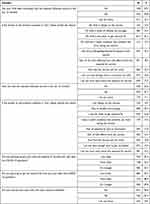 |
Table 2 Questions Regarding the Acceptability of the Seasonal Influenza Vaccine |
Further, 667 participants (26.7%) and 346 children (13.8%) had suffered from COVID-19. The majority of the guardians (2086, 83.4%) had received the COVID-19 vaccine, and the 415 (16.6%) who had not received the vaccine planned to receive it in the near future. Moreover, 1851 guardians (74.0%) were willing to give their child the COVID-19 vaccine if the Ministry of Health permitted it. Table 3 presents details of cases where guardians worried that the child could suffer from it.
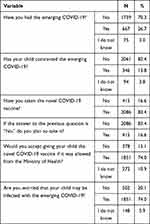 |
Table 3 Questions Regarding the Acceptability of the COVID-19 Vaccine |
The main sources of information were the “Internet” (2230, 32.8%), followed by “Health workers” (1110, 16.3%), and “Social networking sites (such as Twitter and Instagram)” (981, 14.4%). The least-used source of information was the “Ministry of Health and pharmaceutical company reports” (366, 5.4%) (Table 4).
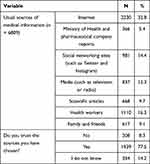 |
Table 4 Questions Regarding the Information Sources and Trust of the Vaccine |
It was evident that participants from southern and western regions, those who had higher education, those who had monthly incomes between USD 3201 and USD 5333, and those who worked in sectors related to health care were more likely to vaccinate their children against seasonal influenza after the COVID-19 pandemic (p < 0.0001) (Table 5).
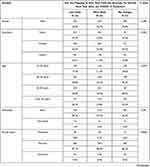 |
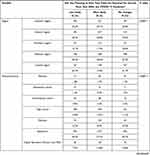 |
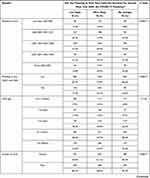 |
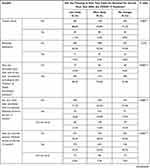 |
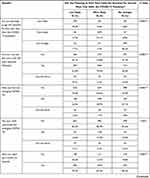 |
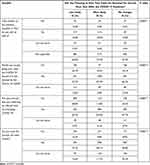 |
Table 5 Factors Associated with the Parents’ Willingness to Vaccinate Their Children Against Seasonal Influenza After the Novel Coronavirus (COVID-19) Pandemic |
Further, parents of a girl or an unhealthy child, those who vaccinated their child with all the basic vaccinations according to the “Ministry of Health Vaccinations” schedule, those who took the vaccine last year, those worried that their child would catch seasonal influenza, those who had not been infected with COVID-19, those whose children had not been infected with COVID-19, those who had received or planned to receive or accept COVID-19 vaccination for their children, those who were concerned that their child would become infected with COVID-19, and those who trust the sources of medical information they chose were more likely to vaccinate their children against seasonal influenza after the COVID-19 pandemic (p < 0.0001). For more details in this regard, please refer to (Table 5).
Discussion
The purpose of this study was to determine the impact of the COVID-19 pandemic on the intentions of parents in Saudi Arabia to vaccinate their children against seasonal influenza in 2021 and to identify the characteristics associated with such intentions. In this study, the majority of the study population was from the central and western regions, as these two regions have the highest population among all regions in Saudi Arabia; moreover, the younger age of the study population was also representative of the overall Saudi population.25
Our results demonstrate that almost half of the participants (47.4%) are willing to give their children the seasonal flu vaccine next year, following the COVID-19 pandemic. After the COVID-19 pandemic, almost half of the guardians (48.9%) are more open to receiving the seasonal flu vaccine the following year. In comparison, only one-third of children (29.8%) received the seasonal influenza vaccine in the previous year. Furthermore, the association between the item “Parents’ willingness to vaccinate their children against seasonal influenza following the COVID-19 pandemic” and the item “Seasonal influenza vaccine information” was significant. In addition, guardians were more likely to vaccinate their children against seasonal influenza if they themselves had received the seasonal influenza vaccine, if they were concerned their children might catch the flu, or if they had vaccinated or planned to vaccinate their children during the previous or current rounds of seasonal influenza vaccine (p 0.0001).
Concurrent pandemics of influenza and COVID-19 will be a complicated challenge.26 Consequently, this could result in high morbidity and mortality and place a strain on the health care sector.6,27 In addition, the global demand for influenza vaccines has increased dramatically from February 2020 to March 2020.28 Over half of our study participants vaccinated their children during the COVID-19 pandemic, thereby reflecting the extent of the impact of the pandemic on the vaccine. Numerous factors contribute to parental vaccine decision-making and increased vaccine willingness. These factors include trust in the advice given by the health care practitioner, mainstream medicine, social networks, sources of vaccination knowledge, and general attitudes toward health.29
Almost half (54.2%) of the 2422 caregivers indicated an intention to vaccinate their children next season, a notable increase from the past year (15.8%).4 Similarly, parents who planned to vaccinate or had previously vaccinated their children were more likely to immunize them against the flu the following year.6 The fear of contracting COVID-19 or influenza might have positively impacted parents’ decision to vaccinate their children.4,28 These findings are similar to those reported by Seiler et al on the acceptance of the influenza vaccine during the COVID-19 pandemic.23
In Saudi Arabia, the COVID-19 vaccination has gained widespread acceptance. Data from Saudi Arabia indicated that two-thirds of caregivers vaccinate their children against COVID-19.30 A recent survey conducted in six countries revealed similar observations.31 Our findings indicated that most participants (74%) intended to vaccinate their children against COVID-19 once the vaccine was approved by the Ministry of Health, thereby decreasing fears regarding the possible consequences and side-effects of the vaccine.
The outbreak of the pandemic and the consequent devastation to human life has sparked the desire to immunize against COVID-19 and influenza.32–34 This has resulted in parents’ growing acceptance of vaccination as a method of infection prevention. Therefore, parents who have planned to vaccinate their children or have already vaccinated their children against COVID-19 are more likely to vaccinate them against seasonal influenza as well.
Furthermore, the aspects of education level, monthly income, and attitude toward the health care system contribute significantly to vaccine acceptance (p 0.0001). Almost 95% of parents who routinely vaccinate their children are enthusiastic about immunizing them against seasonal influenza. This could be a result of increased confidence in the health care system following satisfactory vaccination experiences.
Other studies confirmed our findings as well, thereby revealing a significant association among educational level, immunization record, and the likelihood of receiving seasonal influenza vaccination the following year.4 Moreover, a higher level of education correlates with a more significant potential to comprehend vaccine-related information.6,35 Although almost half of the study population obtained vaccine information through the Internet and social media, our study found that a large percentage of parents were willing to vaccinate their children. This could also be due to the fact that 70.1% of study participants hold a university degree.
In contrast to our findings, a recent study found that the COVID-19 pandemic does not appear to have significantly increased the rates of seasonal influenza vaccination. Furthermore, it may have a detrimental effect on the phase shift of immunization status.22 One plausible reason for this may be that prior researchers conducted their studies early in the pandemic, when the COVID-19 vaccine was unavailable, as the primary factor influencing the intention to obtain the influenza vaccination is prior vaccination history. Another factor that could explain their findings is the effect of lockdown and homeschooling on pediatric age groups. Thus, parents may overlook the importance of the influenza vaccination for their children. The campaign of the Saudi Arabian Ministry of Health to encourage residents to vaccinate against influenza may increase parents’ willingness to vaccinate their children.
Furthermore, socioeconomic status strongly correlates with vaccine acceptance; low-income individuals have a low level of vaccine acceptance.28 Although Saudi Arabia offers vaccinations at no cost, our data indicate that low socioeconomic status is associated with vaccination rejection and a markedly reduced desire to learn about the vaccine.
Vaccines were developed to help protect both patients and health care professionals.36,37 Healthcare providers undoubtedly frequently encounter individuals with influenza and COVID-19 complications. The COVID-19 pandemic has brought intervention strategies and public perceptions of influenza vaccines into sharp focus. Consequently, consistent promotion of public health mitigation strategies is essential, particularly among low-educated individuals and those with large families. Despite this, public health stakeholders continue to be concerned about COVID-19 misinformation.38
Psychological science has identified various strategies for increasing vaccine coverage, including social norms to increase vaccine intention (through social media, health care providers, or public awareness campaigns).22,39,40 The COVID-19 pandemic may have affected public perceptions of vaccination, which may influence future vaccination programs.28 Although our research found an increased intention to get the influenza vaccine compared to last year, our sample size did not represent the entire population. In addition, despite the vaccine’s importance and awareness of the complications related to influenza, the belief in immunogenicity to prevent infection is a reason that people are refusing the vaccine.
Our study has several limitations. First, a major limitation in convenience sampling is representation of the population; however, given the objectives of this study and the current COVID-19 pandemic situation in which a large proportion of people working from home due to lockdowns and other governmental restrictions, we assume that the results of the study can be generalized to the Saudi population. Second, the questionnaire was written exclusively for Arabic readers, thereby creating an obstacle for those who cannot not read Arabic. Third, we rely on guardians’ responses to verify vaccination status. Finally, guardians’ actions may contradict their stated intentions regarding vaccination following the eradication of the COVID-19 pandemic.
Conclusion
This study revealed that parents’ intention to vaccinate their children against seasonal influenza has been influenced by the COVID-19 pandemic. Numerous factors were associated with an increased willingness to receive the flu vaccine: having received the seasonal influenza vaccine, having vaccinated or planning to vaccinate their children during the previous or current seasonal influenza season, and having a higher education level. The Ministry of Health in Saudi Arabia must coordinate public awareness campaigns that emphasize the importance of getting an influenza vaccination for children.
Funding
This research received no external funding.
Disclosure
The authors have no conflicts of interest to declare.
References
1. Euro.who.int. Virology of human influenza [Internet]; 2021. Available from: https://www.euro.who.int/en/health-topics/communicable-diseases/influenza/data-and-statistics/virology-of-human-influenza.
2. World Health Organization. Influenza (seasonal); 2018. Available from: https://www.who.int/newsroom/fact-sheeets/detail/influenza-(seasonal).
3. Grech V, Borg M. Influenza vaccination in the COVID-19 era. Early Hum Dev. 2020;148:105116. doi:10.1016/j.earlhumdev.2020.105116
4. Goldman RD, McGregor S, Marneni SR, et al. Willingness to vaccinate children against influenza after the Coronavirus disease 2019 pandemic. J Pediatr. 2021;228:87–93.e2. doi:10.1016/j.jpeds.2020.08.005
5. Centers for Disease Control and Prevention. Estimated influenza illnesses, medical visits, hospitalizations, and deaths in the United States—2018–2019 influenza season. Washington, DC: US Department of Health & human Services; 2020. Available from: https://www.cdc.gov/flu/about/burden/2018-2019.html.
6. Singer BD. COVID-19 and the next influenza season. Sci Adv. 2020;6(31):eabd0086. doi:10.1126/sciadv.abd0086
7. John Hopkins University and Medicine Coronavirus Resource Centre. COVID data by region. Available from: https://coronavirus.jhu.edu/map.html.
8. Wiersinga WJ, Rhodes A, Cheng AC, Peacock SJ, Prescott HC. Pathophysiology, transmission, diagnosis, and treatment of Coronavirus disease 2019 (COVID-19): a review. JAMA. 2020;324(8):782–793. doi:10.1001/jama.2020.12839
9. Killingley B, Nguyen-van-tam J. Routes of influenza transmission. Influenza Other Respir Viruses. 2013;7(Suppl2):42–51. doi:10.1111/irv.12080
10. Boccia S, Ricciardi W, Ioannidis JPA. What other countries can learn from Italy during the COVID-19 pandemic. JAMA Intern Med. 2020;180(7):927–928. doi:10.1001/jamainternmed.2020.1447
11. Jaklevic MC. Flu vaccination urged during COVID-19 pandemic. JAMA. 2020;324(10):926–927. doi:10.1001/jama.2020.15444
12. Bourassa KJ, Sbarra DA, Caspi A, Moffitt TE. Social distancing as a health behavior: county-level movement in the United States during the COVID-19 pandemic is associated with conventional health behaviors. Ann Behav Med. 2020;54(8):548–556. doi:10.1093/abm/kaaa049
13. Harper CA, Satchell LP, Fido D, Latzman RD. Functional fear predicts public health compliance in the COVID-19 pandemic. Int J Ment Health Addict. 2020;1–14. doi:10.1007/s11469-020-00281-5
14. Who.int. COVID-19 vaccines advice; 2021. Available from: https://www.who.int/emergencies/diseases/novel-coronavirus-2019/covid-19-vaccines/advice.
15. Centers for Disease Control and Prevention. Coronavirus disease 2019 (COVID-19); 2021. Available from: https://www.cdc.gov/coronavirus/2019-ncov/variants/delta-variant.html.
16. Michiels B, Govaerts F, Remmen R, Vermeire E, Coenen S. A systematic review of the evidence on the effectiveness and risks of inactivated influenza vaccines in different target groups. Vaccine. 2011;29(49):9159–9170. doi:10.1016/j.vaccine.2011.08.008
17. Plans-Rubió P. The vaccination coverage required to establish herd immunity against influenza viruses. Prev Med. 2012;55(1):72–77. doi:10.1016/j.ypmed.2012.02.015
18. Centers for Disease Control and Prevention. Flu vaccine coverage, United States 2018–19 influenza season. Washington, DC: US Department of Health & human Services; 2019. https://www.cdc.gov/flu/fluvaxview/coverage-1819estimates.htm.
19. Centers for Disease Control and Prevention. Benefits of flu vaccination during 2018–2019 flu season; 2021. Available from: https://www.cdc.gov/flu/about/burden-averted/2018-2019.htm.
20. Centers for Disease Control and Prevention. Vaccine for flu (influenza); 2019. Available from: https://www.cdc.gov/vaccines/parents/diseases/flu.html.
21. Ministry of Health, Saudi Arabia. MOH launches seasonal influenza vaccination campaign today. Available from: https://www.moh.gov.sa/en/Ministry/MediaCenter/News/Pages/News-2020-09-28-007.aspx.
22. Sokol RL, Grummon AH. COVID-19 and parent intention to vaccinate their children against influenza. Pediatrics. 2020;146(6):e2020022871. doi:10.1542/peds.2020-02287
23. Seiler M, Goldman RD, Staubli G, et al. Parents’ intent to vaccinate against influenza during the COVID-19 pandemic in two regions in Switzerland. Swiss Med Wkly. 2021;151:w20508. doi:10.4414/smw.2021.20508
24. Naing NN. Determination of sample size. MJMS. 2003;10:84.
25. Stats.gov.sa; 2021. Demographic Research Bulletin. Available from: https://www.stats.gov.sa/sites/default/files/en-demographic-research-2016_7.pdf.
26. Thanh Le T, Andreadakis Z, Kumar A, et al. The COVID-19 vaccine development landscape. Nat Rev Drug Discov. 2020;19(5):305–306. doi:10.1038/d41573-020-00073-5
27. Gostin LO, Salmon DA. The dual epidemics of COVID-19 and influenza: vaccine acceptance, coverage, and mandates. JAMA. 2020;324(4):335–336. doi:10.1001/jama.2020.10802
28. Paguio JA, Yao JS, Dee EC. Silver lining of COVID-19: heightened global interest in pneumococcal and influenza vaccines, an infodemiology study. Vaccine. 2020;38(34):5430–5435. doi:10.1016/j.vaccine.2020.06.069
29. Dubé E, Gagnon D, MacDonald N, Bocquier A, Peretti-Watel P, Verger P. Underlying factors impacting vaccine hesitancy in high income countries: a review of qualitative studies. Expert Rev Vaccines. 2018;17(11):989–1004. doi:10.1080/14760584.2018.1541406
30. Al-Mohaithef M, Padhi BK. Determinants of COVID-19 vaccine acceptance in Saudi Arabia: a web-based national survey. J Multidiscip Healthc. 2020;13:1657–1663. doi:10.2147/JMDH.S276771
31. Setbon M, Raude J. Factors in vaccination intention against the pandemic influenza A/H1N1. Eur J Public Health. 2010;20(5):490–494. doi:10.1093/eurpub/ckq054
32. Rubin GJ, Potts HW, Michie S. Likely uptake of swine and seasonal flu vaccines among healthcare workers. A cross-sectional analysis of UK telephone survey data. Vaccine. 2011;29(13):2421–2428. doi:10.1016/j.vaccine.2011.01.035
33. Schwarzinger M, Flicoteaux R, Cortarenoda S, Obadia Y, Moatti JP. Low acceptability of A/H1N1 pandemic vaccination in French adult population: did public health policy fuel public dissonance? PLoS One. 2010;5(4):e10199. doi:10.1371/journal.pone.0010199
34. Vasilevska M, Ku J, Fisman DN. Factors associated with healthcare worker acceptance of vaccination: a systematic review and meta-analysis. Infect Control Hosp Epidemiol. 2014;35(6):699–708. doi:10.1086/676427
35. Glatman-Freedman A, Nichols K. The effect of social determinants on immunization programs. Hum Vaccin Immunother. 2012;8(3):293–301. doi:10.4161/hv.19003
36. Nguyen TTM, Lafond KE, Nguyen TX, et al. Acceptability of seasonal influenza vaccines among health care workers in Vietnam in 2017. Vaccine. 2020;38(8):2045–2050. doi:10.1016/j.vaccine.2019.12.047
37. Anjum Q, Omair A, Inam SN, Ahmed Y, Usman Y, Shaikh S. Improving vaccination status of children under five through health education. J Pak Med Assoc. 2004;54(12):610–613.
38. Hou Z, Song S, Du F, et al. The influence of the COVID-19 epidemic on prevention and vaccination behaviors among Chinese children and adolescents: cross-sectional online survey study. JMIR Public Health Surveill. 2021;7(5):e26372. doi:10.2196/26372
39. Brewer NT, Chapman GB, Rothman AJ, Leask J, Kempe A. Increasing vaccination: putting psychological science into action. Psychol Sci Public Interest. 2017;18(3):149–207. doi:10.1177/1529100618760521
40. Juraskova I, O’Brien M, Mullan B, Bari R, Laidsaar-Powell R, McCaffery K. HPV vaccination and the effect of information framing on intentions and behaviour: an application of the theory of planned behaviour and moral norm. Int J Behav Med. 2012;19(4):518–525. doi:10.1007/s12529-011-9182-5
 © 2021 The Author(s). This work is published and licensed by Dove Medical Press Limited. The full terms of this license are available at https://www.dovepress.com/terms.php and incorporate the Creative Commons Attribution - Non Commercial (unported, v3.0) License.
By accessing the work you hereby accept the Terms. Non-commercial uses of the work are permitted without any further permission from Dove Medical Press Limited, provided the work is properly attributed. For permission for commercial use of this work, please see paragraphs 4.2 and 5 of our Terms.
© 2021 The Author(s). This work is published and licensed by Dove Medical Press Limited. The full terms of this license are available at https://www.dovepress.com/terms.php and incorporate the Creative Commons Attribution - Non Commercial (unported, v3.0) License.
By accessing the work you hereby accept the Terms. Non-commercial uses of the work are permitted without any further permission from Dove Medical Press Limited, provided the work is properly attributed. For permission for commercial use of this work, please see paragraphs 4.2 and 5 of our Terms.
